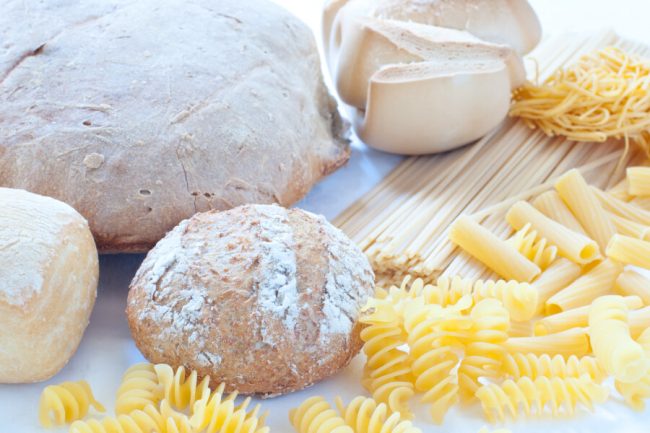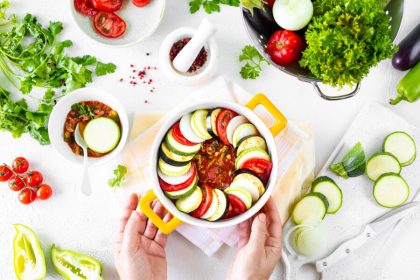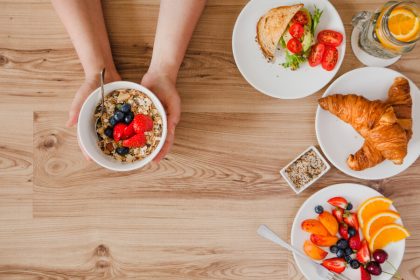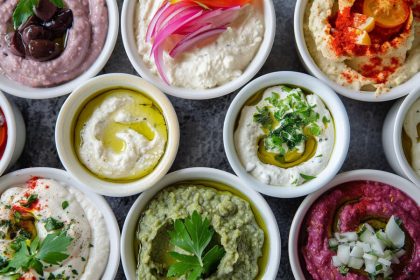Are you trying to figure out which foods contain gluten and what you need to avoid for a gluten-free diet?
Maybe you have celiac disease, gluten sensitivity, or you’re just curious about what gluten is all about.
Whatever the reason, knowing which foods to avoid is key to staying healthy. In this easy-to-follow guide, we’ll break down the common and sneaky places gluten might be hiding, how to spot them, and share tips to help you smoothly transition to a gluten-free lifestyle.
Understanding Gluten: What is Gluten?
Gluten is a type of protein found in certain grains such as wheat, barley, and rye. It’s the component that gives dough its elasticity, helping it rise and maintain its shape. For most people, gluten is harmless. However, for individuals with celiac disease or gluten sensitivity, consuming gluten can cause a range of symptoms from digestive discomfort to more severe health issues.
How Does Gluten Affect the Body?
For those with celiac disease, an autoimmune disorder, consuming gluten triggers an immune response that damages the lining of the small intestine. This can lead to symptoms like bloating, diarrhea, weight loss, and malnutrition. On the other hand, people with non-celiac gluten sensitivity experience similar symptoms without the autoimmune response. It’s essential for these individuals to understand where gluten hides to avoid adverse health effects.
Types of Grains with Gluten
Gluten is primarily found in three types of grains: wheat, barley, and rye. Understanding which grains to avoid is the first step in managing a gluten-free diet.
- Wheat: Wheat is the most common source of gluten. It is found in countless everyday foods, from bread and pasta to baked goods and cereals. Varieties such as durum, semolina, spelt, and kamut also contain gluten.
- Barley: Often used in soups, stews, and beer production, barley is another grain containing gluten. It’s also found in malt and malt flavoring, commonly used in candies and cereals.
- Rye: This grain is typically used in bread like pumpernickel and rye bread. It also appears in rye beer and certain cereals.
Common Foods That Contain Gluten
While it’s relatively easy to identify the grains that contain gluten, the challenge lies in recognizing the numerous foods that contain gluten or gluten derivatives. Here’s a rundown of common foods to watch out for:
- Breads and Pastas: Most conventional breads, rolls, and pasta products are made from wheat flour, which contains gluten. This includes items like sandwich bread, bagels, and pizza dough.
- Cereals: Many breakfast cereals use wheat or barley malt as an ingredient, making them off-limits for those avoiding gluten. Always check the label!
- Baked Goods: From cakes and cookies to muffins and pastries, most baked goods are made with wheat flour and are a no-go for a gluten-free diet.
- Processed Foods: Processed foods such as sausages, soups, and sauces often contain hidden gluten in the form of thickening agents, flavorings, or fillers.
Hidden Sources of Gluten
Gluten isn’t just in obvious foods like bread or pasta; it often hides in less expected places. Here are some hidden sources of gluten you should be aware of:
- Condiments and Sauces: Soy sauce, salad dressings, and gravies often contain wheat as a thickener. Look for gluten-free versions or make your own at home to stay safe.
- Processed Meats: Some deli meats, sausages, and hot dogs contain fillers or seasonings with gluten. Be cautious and choose gluten-free certified options.
- Beverages: Beers made from barley or wheat contain gluten. However, there are many gluten-free beers on the market today that are safe to consume.
How to Avoid Cross-Contamination in Your Food
Even if a food item is naturally gluten-free, it can become contaminated with gluten during production, handling, or cooking. For example, oats are naturally gluten-free but are often processed in facilities that handle wheat, leading to cross-contamination. Look for products labeled “certified gluten-free” to minimize this risk.
Foods That May Contain Gluten
- Oats: While oats themselves don’t contain gluten, they are often processed in facilities that handle gluten-containing grains, leading to cross-contamination. Always choose oats that are certified gluten-free.
- Spices and Seasonings: Some spice blends and seasonings may contain gluten as anti-caking agents or flavor enhancers. Always check labels or opt for pure, single-ingredient spices.
Tips for Reading Labels
Navigating the grocery store can be daunting when you’re trying to avoid gluten. Here are some tips for reading labels:
- Look for “Gluten-Free” Certifications: Foods labeled “certified gluten-free” have been tested to ensure they contain less than 20 parts per million (ppm) of gluten, which is considered safe for most people with celiac disease.
- Beware of Hidden Ingredients: Ingredients like “modified food starch,” “hydrolyzed vegetable protein,” or “malt” often indicate the presence of gluten. When in doubt, research or contact the manufacturer.
Celiac Disease and Gluten Sensitivity
Many people hear about gluten but aren’t fully aware of why some must avoid it strictly. Here’s a brief overview:
Difference between Celiac Disease and Gluten Sensitivity
- Celiac Disease: A serious autoimmune disorder where ingesting gluten leads to damage in the small intestine. Diagnosis requires a blood test and possibly a biopsy.
- Gluten Sensitivity: Not an autoimmune disease, but still causes symptoms like bloating, gas, or headaches. Diagnosis is typically made after ruling out celiac disease and wheat allergy.
Symptoms of Gluten Sensitivity
Symptoms of gluten sensitivity can range from digestive issues like bloating and gas to fatigue, headaches, and joint pain. If you suspect you have gluten sensitivity, consult a healthcare professional for testing and advice.
Diagnosis and Treatment
Diagnosis usually involves a combination of a gluten-free diet and medical testing. If you’re diagnosed with celiac disease or gluten sensitivity, a strict gluten-free diet is the only effective treatment.
Gluten in Non-Food Items
Gluten isn’t just limited to food. It can also be found in a range of non-food items that you may not expect:
- Cosmetics and Personal Care Products: Some lipsticks, lotions, and shampoos contain gluten. Look for gluten-free labels or research product ingredients.
- Medications: Certain medications and supplements use gluten as a binder. Always consult with a pharmacist or check with manufacturers to ensure they are gluten-free.
- Play-Doh and Art Supplies: Some children’s play products, like Play-Doh, contain gluten. Be cautious if you have kids with celiac disease or gluten sensitivity.
Adopting a Gluten-Free Diet
Adopting a gluten-free diet doesn’t mean missing out on delicious food. In fact, there are numerous benefits to going gluten-free beyond just managing celiac disease or gluten sensitivity.
Benefits of Going Gluten-Free
- Improved Digestive Health: Removing gluten can alleviate symptoms like bloating, diarrhea, and stomach cramps for those with sensitivity.
- Increased Energy Levels: Many people report feeling more energetic and less fatigued after eliminating gluten from their diets.
Transitioning to a Gluten-Free Lifestyle
Transitioning to a gluten-free lifestyle can be challenging initially, but with some planning and knowledge, it becomes easier:
- Stock Up on Gluten-Free Staples: Quinoa, rice, potatoes, fruits, vegetables, lean meats, and gluten-free grains are great to have on hand.
- Explore Gluten-Free Alternatives: Look for gluten-free versions of your favorite bread, pasta, and snacks. With the rise of gluten-free living, there are many delicious options available.
- Experiment with New Recipes: Try new recipes that are naturally gluten-free, like grilled fish with a side of quinoa salad, or roasted vegetables with a tahini dressing.
Conclusion
Understanding which foods contain gluten and how to avoid them is essential for those managing celiac disease, gluten sensitivity, or anyone exploring a gluten-free lifestyle. By being aware of the common and hidden sources of gluten, reading labels carefully, and making informed choices, you can enjoy a delicious and varied diet without gluten.
FAQs
What are the main gluten foods to avoid?
Breads, pastas, baked goods, cereals, and processed foods containing wheat, barley, and rye.
What food is really high in gluten?
Foods made from wheat flour like bread, pasta, and baked goods have high gluten content.
What foods do you avoid on a gluten-free diet?
Avoid any foods containing wheat, barley, rye, and their derivatives, as well as hidden sources like certain sauces and processed meats.
Does rice have gluten?
No, rice is naturally gluten-free and is a safe option for those avoiding gluten.








